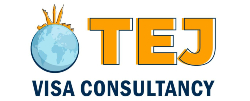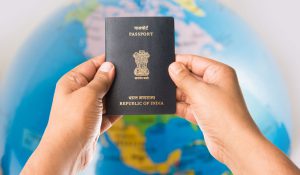New Zealand announces significant visa fee increases from October; student visas to get costlier too

- The New Zealand government announced a visa fee hike across almost all visa categories on August 9. The change aims to “free up” more than NZD$563 million over the next four years, restore fiscal discipline, and reinvigorate the country’s economy.
- The NZ Government’s Increases Visa Fees on October 1, will affect those who live, work and study from October 1. These increases will be in the form of fees and levies and will apply to almost all visa categories.
- New Zealand Increases Visa Fee Overview
- From October 1, new visa fees will be set in a way that recovers the cost of processing the visa. “These fees are still competitive compared to countries such as Australia and the United Kingdom, so we are confident that New Zealand will continue to be an attractive place to live, work, study and visit,” Immigration Minister Erica Stanford said.
- According to Immigration Minister Erica Stanford, “Until now, the overwhelming majority of our immigration system has been subsidized by taxpayers.” She continued, “The adjustments we are making will shift the expense of this system on those who gain from it. We’re making sure it’s self-sustaining and efficient.”
![*]() Why Has New Zealand Increases Visa Fees?
Why Has New Zealand Increases Visa Fees?
As per the press conference by Immigration Minister Erica Stanford, why New Zealand Increases Visa Fee given below:
- Cost Recovery:
From October 1, 2024, new visa fees will be structured to cover the full cost of processing visas. This change aims to make the immigration system more financially sustainable by ensuring that those who benefit from it contribute to its costs.
- Competitiveness:
Despite the fee increase, New Zealand’s visa fees will remain competitive compared to other countries like Australia and the United Kingdom. This is expected to maintain New Zealand’s appeal as a desirable destination for living, working, studying, and visiting.
- Reducing Taxpayer Subsidies:
Immigration Minister Erica Stanford highlighted that the majority of the immigration system has previously been subsidized by taxpayers. The new fee structure will shift the financial burden from taxpayers to visa applicants.
- System Sustainability:
The changes are designed to make the immigration system self-sustaining and efficient, ensuring that the costs are appropriately aligned with those who directly benefit from the services.
![*]() When Will the New Visa Fees Take Effect?
When Will the New Visa Fees Take Effect?
- The new visa fees will take effect from 1 October 2024. The Government has decided to implement these changes starting on this date to ensure that the visa fees accurately cover the cost of visa processing and reflect the benefits to users of immigration services. This adjustment aims to make the immigration system financially self-sustaining and fair to those who benefit from it.
![*]() Detailed Breakdown of New Zealand Increases Visa Fee
Detailed Breakdown of New Zealand Increases Visa Fee
- In response to the evolving global economic landscape, NZ Government is implementing a revised New Zealand Increases Visa Fee structure starting October 1, 2024. This change aims to reflect the true cost of processing applications while ensuring a streamlined and efficient service for all applicants. Below we provide all the details New Zealand Increases Visa Fee:
Work Visa Fees
- Temporary Work Visa: The cost of the Authorised Employer Work Visa (the primary temporary work visa) will decrease from $540 to $480. However, the Immigration Levy for this visa will rise significantly from $210 to $1060, reflecting the new fee structure intended to cover processing costs.
Student Visa Fees
- Primary and Secondary School Students: The student visa fee will increase from $300 to $485. Additionally, the Immigration Levy for student visas will rise from $95 to $265.
- Higher Education and Tertiary Students: Post-Study Work Visa fees will decrease from $490 to $320, but the Immigration Levy will see a substantial increase from $210 to $1350.
![*]() How the Visa Fee Increase Affects Travelers and Migrants
How the Visa Fee Increase Affects Travelers and Migrants
Impact on Frequent Visitors
- From October 1, 2024 frequent visitors to New Zealand will have to pay more for their visas. The idea is to set up the new fees in a way that they will entirely fund visa processing — so travelers who need to renew existing visas or apply for visas anew should brace themselves for higher costs. That hike will be noticed by anyone who goes to New Zealand often for working or holiday purposes as it might make travelling there slightly more expensive and less attractive a frequent visit.
Implications for International Students
- Student visa fees would go from NZD$300 to $NZ750 and the fee for a post-study work visa that rose precisely by 700%, will jump up approximately six fold from $1700. In order to address the challenges posed by COVID-19, there will be proposed increases in fees for student visas including an increase of from NZD $95 -> NZD $265 and a post-study work visa levy going up from NZD 210 ‐> 1,350. As it is, some of these increases might have a deterrent effect on students from countries with weak currencies that could in turn affect New Zealand’s standing as an attractive education destination. But even with the inflated cost, New Zealand was shown to be competitive to countries such as Australia and United Kingdom.
Changes for Skilled Workers and Migrants
- Unemployed pay hikes for skilled workers and migrants too The ATC application fee will decrease ($540 to $480) and the new Immigration Levy will increase significantly from (1000 -210 or 260 ) to NZD1060. The fee changes align with the cost recovery model, which requires those who benefit from immigration services to pay for them. This will likely further shift the choices of skilled migrants who are looking at New Zealand and, more importantly, many low-skill roles have now been afforded English language requirements to sit within controlling visa-type areas as well which pertain to reduced stay durations.






